
table of contents
- Hardiness zones in Germany
- Extremely hardy potted plants
- Evergreen, hardy potted plants
- Deciduous trees and shrubs
- Winterize potted plants
- Winter protection
Unfortunately, the balcony at home is not suitable for every plant to survive the winter unscathed. So that you can enjoy strong and healthy potted plants in the next year too, they must be sufficiently hardy. Here you can find out which species as balcony plants brave the cold the most, so that they can easily stay outside during the cold season.
Hardiness zones in Germany
Many plant lovers ask themselves whether a balcony plant is a sufficient winter hardiness owns. Most of Germany belongs to climate zone 7. That means average low temperatures of around minus 12 to minus 17 degrees Celsius in winter, and in mountainous regions also significantly colder. Only in wine-growing areas is it not quite as frosty.
Note: In a sheltered location it can be warmer, in draughty places it can also be significantly colder.
Extremely hardy potted plants
When selecting the perennials, it is important to note that many species are not very sensitive to frost, but retreat to the underground parts of the plant in autumn. They stay there until spring. Others keep their leaves or even bloom in winter, making them an eye-catcher on the balcony. Not all varieties of a plant are extremely hardy. We have therefore listed a selection of the most robust varieties that can withstand temperatures of at least minus 25 degrees without any problems.
Bellflower (campanula)

With its colorful flowers is the Bellflower a valuable garden shrub. Their trademark are the star-shaped flowers that bloom from spring to autumn, depending on the type and variety. The bellflower also does well as a balcony plant. In order for the Campanula to survive the winter as a container plant unscathed, it is important to choose the right variety.
- Substrate: normal, humus garden soil
- Location: sunny to partially shaded
- Ball-bellflower (Campanula glomerata)
- Carpathian bellflower (Campanula carpatica)
- Peach-leaved bellflower (Campanula persicifolia)
Carnation (Dianthus)
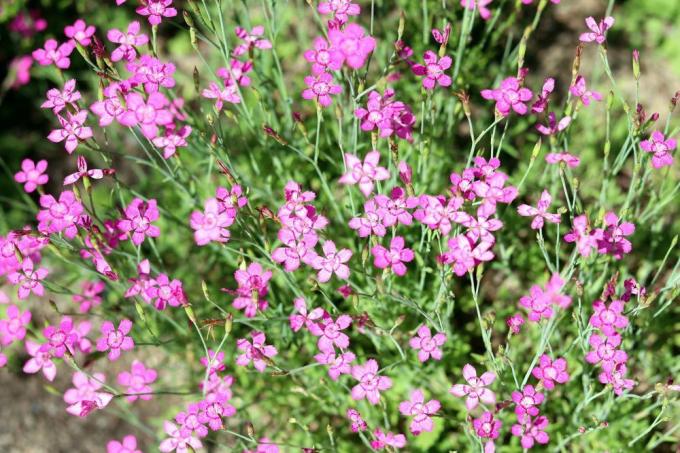
Carnations have almost been forgotten a little. And completely wrongly, because the gray-blue or green leafy plants are very easy to care for. And not only in the garden bed, but also as a balcony plant. In summer they can tolerate heat and drought. Many types of carnation, including the robust Karthäuselke, are also extremely hardy with temperatures of up to minus 35 degrees Celsius.
- Substrate: permeable, sandy, calcareous (heather carnation: acidic)
- Location: the sunnier, the better
- Pentecost Carnation (Dianthus gratianopolitanus)
- Heath Carnation (Dianthus deltoides)
- Feather carnation (Dianthus plumaris)
Purple bells (Heuchera)

Instead of opulent flowers, the purple bell impresses with its beautifully colored foliage. From bluish silver to dark red to various shades of yellow and green, everything is included. Another advantage: Due to its excellent winter hardiness, the Heuchera decorates the balcony with colorful splashes of color even when it is below freezing.
- Height: 20 to 70 cm
- Substrate: nutrient-rich and well-drained
- Location: depending on the variety
Cranesbill (geranium)
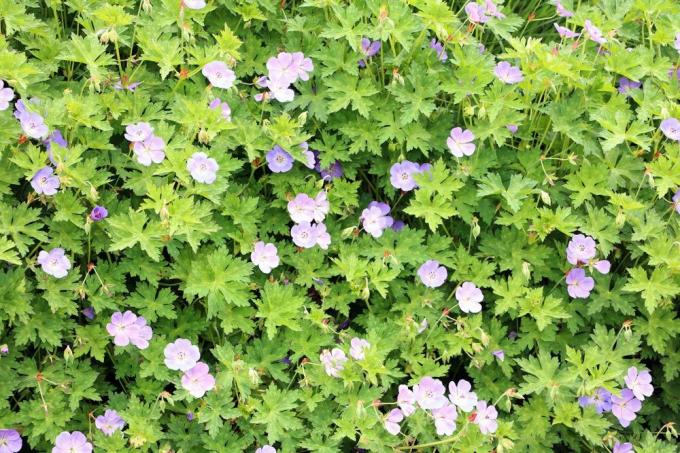
It is robust, extremely adaptable and green almost all year round. Hardly any ornamental garden can do without the popular permanent bloomer. And the numerous varieties of the Cranesbill as very robust and easy to care for.
- Substrate: humus, rich in nutrients, moderately moist
- Location: depending on the variety, from full sun to shade
- Oxford cranesbill 'Rebecca Moss'
- Double Himalayan cranesbill (Geranium himalayense 'Plenum')
- Balkan cranesbill (Geranium macrorrhizum)
Evergreen, hardy potted plants
Many a plant lover is looking for a plant that is well suited as a balcony plant, is extremely hardy and at the same time looks very decorative during the cold season. In principle, unusual or even exotic plants come into their own as balcony plants than in the garden. This includes variegated or free-flowering plant species as well as topiary.
Tip: So that you can successfully cultivate trees as balcony plants, you should use small species and varieties.
Mountain laurel (Kalmia latifolia)

The evergreen Mountain laurel, also called laurel rose, impresses not only with its enchanting flowers, but also with its extreme winter hardiness. The shrub, up to two meters high, originally comes from eastern North America and grows very slowly into a broad bush.
- Substrate: fresh to moist, strongly acidic to neutral
- Location: sunny to partially shaded
- protected from the strong midday sun and cold wind
Firethorn (Pyracantha)

The firethorn is certainly one of the most beautiful local fruit trees. The thorn bush can be cultivated not only as an impenetrable hedge, but also as a hardy tub plant on a balcony. And that doesn't even require a green thumb. In autumn it bears bright red or orange-colored fruits, which remain on the bush throughout winter and thus bring some color to the dreary winter gray.
- Substrate: permeable to water, rather dry, loamy
- Location: as sunny as possible, sheltered from the wind
- Mediterranean varieties are somewhat sensitive to frost
- Varieties: dwarf fire thorn 'Anatolia', 'Golden Charmer', 'Red Column'
Japanese spindle (Euonymus japonicus)
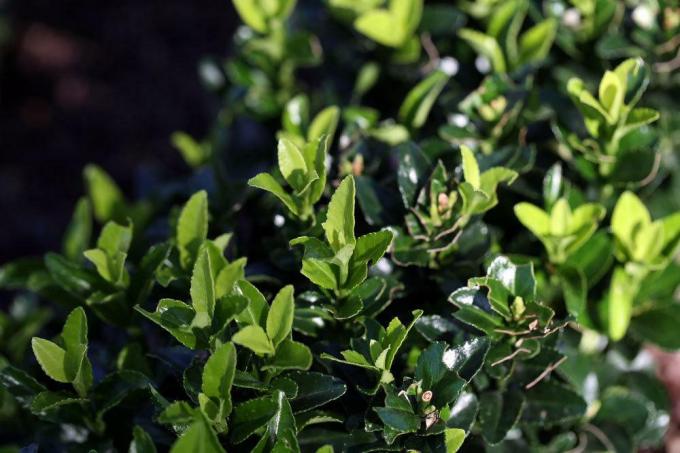
Because of its small, often colorful variegated leaves and the dense, compact growth, the Japanese spindle is enjoying increasing popularity - recently also as a container plant on the balcony. And rightly so, because it is very easy to care for and retains its attractive foliage even in the cold season.
- Substrate: undemanding, fresh to nutritious
- Location: sunny to partially shaded
- Varieties: 'Hees Pierrolino', 'President Gauthier'
Gaultheria procumbens (Gaultheria procumbens)

the Shamberry, also called carpet berry, red partridge berry or wintergreen, is native to the northeastern United States and Canada, where it is used to cold winters. It is one of the low-growing ground cover plants and forms white or pink bell-shaped flowers in July and August. However, the red capsule fruits, which look very similar to berries, are a real eye-catcher.
- Substrate: humic, acidic
- Location: partial shade to light shade
- almost all varieties are very hardy
Deciduous trees and shrubs
Most of the deciduous trees lose their leaves in autumn after they shine again in full beauty in their colorful autumn leaves. But not all woody plants are also suitable for planting terraces and balconies. We have therefore selected a few very hardy and also small-growing species that also thrive perfectly as container plants.
Scented Lilac (Syringa meyeri)

The Scented lilac can be described in just a few words: free-flowering, frost-hardy, easy-care, ideal for the tub. The popular ornamental wood is characterized by its filigree foliage and its wonderfully fragrant flowers. The small, panicle-shaped flowers unfold from ruby-red buds, when opened the color changes to a dark purple and finally turns into a distinctive pink.
- Substrate: permeable, humic, slightly acidic to slightly alkaline
- Location: sun to partial shade
- Varieties: 'Palibin', 'Josee', 'Red Pixie'
Black elderberry / lilacberry (Sambucus nigra)
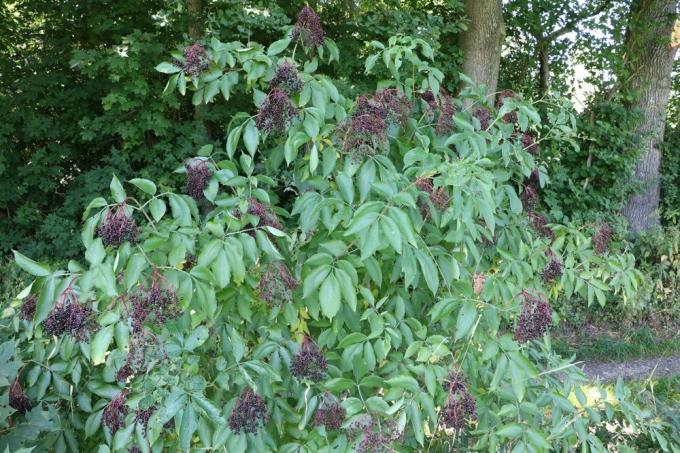
Everyone knows the native elderberry bush, a typical wild wood that is often found on the edge of the forest or road. In spring it shows its white flower dress and in autumn the elderberries develop. The great thing about the elderberry: Even as a container plant on the balcony, it is very undemanding, resistant and hardy. Both flowers and fruits can be used in many ways in the kitchen.
- Substrate: nutrient-rich, normal garden soil
- Location: sunny to partially shaded
- almost all varieties are extremely hardy
- Black elderberry 'Black Beauty' (dark red-brown leaf dress)
Swamp oak (Quercus palustris)
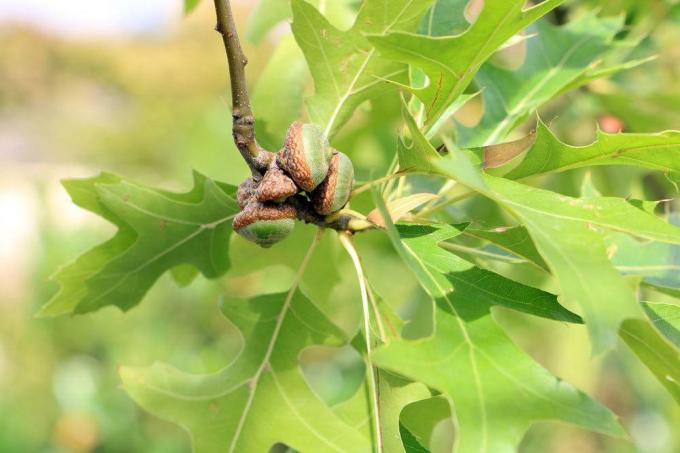
The swamp oak, also known as the Spree oak, is an absolute rarity in the garden scene. The extraordinary tree is one of the smaller representatives of its genus, which grows only about 1.5 meters high and is therefore ideal as a balcony plant. The globular oak also impresses with the scarlet color of its leaves in autumn.
- Substrate: fresh and nutritious, acidic to neutral
- Location: sunny to partially shaded
- special varieties: 'Green Dwarf' and 'Isabel'
Dwarf Ginkgo (Ginkgo biloba)

Of the ginkgo occupies a special position in the plant kingdom, because it is neither a deciduous tree nor a conifer, but belongs to the naked-seed cycads. Around 150 million years ago, ginkgo trees were common representatives in the forests of the northern hemisphere. Today the plants are only found in China, Japan and Korea. With the ginkgo you get a real dinosaur among the plants on the balcony. And the container plant is just as robust when it comes to cold weather.
- Substrate: nutrient-rich, sandy, humus
- Location: sun to partial shade
- small varieties: 'Troll', 'Salve'
Winterize potted plants
All of the potted plants listed are completely hardy in a protected place outdoors up to icy temperatures of below minus 25 degrees. However, that doesn't mean they don't need winter protection in a pot on the balcony. This already begins during the vegetation phase with a sufficient supply of nutrients. Carnations, firethorns and the like not only thrive better, they also form the necessary defenses to survive the cold months unscathed.
- During the growth phase: liquid fertilizer or fertilizer sticks
- in August: special potassium fertilizer
- Do not fertilize any more from September
Winter protection
In the case of long periods of frost, you should play it safe and protect the roots from freezing through. In addition, the leaves of evergreen plants can dry out in strong sunlight and strong winds. Therefore, the plants should not be exposed to the blazing sun in winter.
- Styrofoam base
- Covering the pot with fleece, bubble wrap or coconut mat
- alternatively: large planter with straw (at least 10 cm layer on all sides)
- Cover the top with straw or leaves
- possibly attach a shading net
Note: Don't forget to water your hardy potted plants on frost-free days. In fact, more plants die of thirst rather than freeze in winter.

